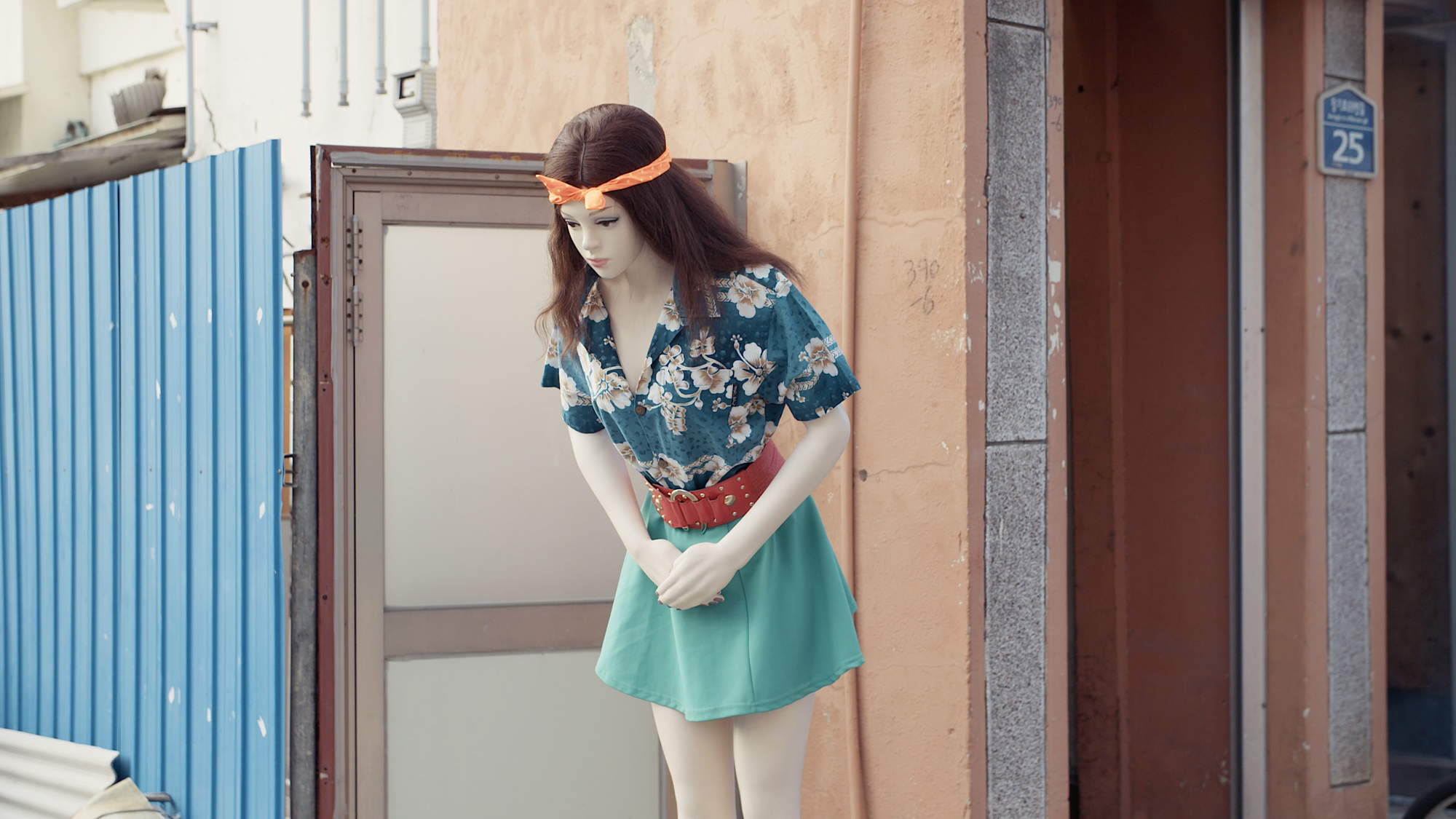
Completists that we are here at DN, we patiently waited for a break in the director Nils Clauss’ ever busy schedule to discuss Plastic Girls, the final part of his Korea shorts trilogy, which began with Bikini Words and continued in Last Letters. In the following interview Nils discusses his critical exploration of the link between commerce and the sexualisation of public space, as well as his continued experimentation and redefinition of the ‘rules’ of documentary filmmaking.
Your approach differs from a ‘pure’ documentary practice which seeks to translate reality as directly as possible to screen. How do you feel the expanded tool set you utilise frees you to better convey the larger truths of your films? What are the boundaries which conceptually place your work within the sphere of documentary?
Bikini Words, the first part of the Korea related trilogy which was then followed by Last Letters and Plastic Girls, set the tone and style for all three films in the first place. When I shaped the idea for Bikini Words I was not so much concerned about genre and I was not so concerned about whether the film should be a documentary or a narrative film. Everything just fell into place and the result was a film which mixes documentary and fictional elements. After Bikini Words was finished, I actually came across the genre term ‘hybrid film’ for the first time. But despite this expression being helpful to categorise my films more accurately, I personally feel that conforming to genre categories isn’t really a good way to approach to film making. A film needs what it needs. In my opinion it does not matter whether the ingredients of a film have a documentary, fictional or even experimental character.
I think that a documentary film doesn’t necessarily need to be governed by reality or truth in order to achieve authenticity.
The fact that the documentary genre is often directly linked to truth, I find problematic and restrictive. A documentary filmmaker is equal to a fictional filmmaker, I think of both merely being storytellers. Similar to narrative films making use of elements being based on real events, I think that a documentary film doesn’t necessarily need to be governed by reality or truth in order to achieve authenticity. Nevertheless I think it is important that the audience can navigate between what is documentary and what is fiction. My trilogy should make that very clear.
In Bikini Words real factory workers perform as actors, while the story about linguistic developments is a true document of the Korean factory period time in the 1970s and 1980s. In Last Letters real family members document the death of their loved ones who tragically died in the Sewol ferry accident, while a couple of actors run away from the truth in dreamlike sequences almost as they would be haunted by an ugly devastating truth. And the scripted interviews with the mannequins in Plastic Girls shape a bizarre and almost fictional world, while the larger truth is highlighted by the use of a thought provoking male gaze.
Since the human characteristics of the mannequins in Plastic Girls, along with the scripted interviews, are far away from what we would consider real, this film differs most from a pure documentary practise within the trilogy. Here the documentary element is simply reduced to the fact that those mannequins exist and are used to greet customers through movement and speech. But since this is the essence of the film, which is the starting point for the film’s critique of a sexualization of public space, I consider this sufficient to categorise the film as a documentary, which conveys a larger and powerful truth of what we directly see in the film.

The plastic mannequin greeters feel incongruous to Western sensibilities – not that we’re guilt-free in the sexualisation of public space. Were you able to ascertain the origins of the practice or speak directly to any store owners about their use of them?
First of all (and that might be already obvious even to people unfamiliar with Korean culture) Korean culture traditionally has emphasised the importance of an intricate greeting system. Whereas this used to be more complex, bowing is still a very important element of modern Korean life. This explains the movement the plastic mannequins engage in. Whereas for a polite bow it is sufficient to lower your upper body about 15 percent, one should perform a lower bow of at least 30 percent when you meet someone formally for the first time. So the bows we see in Plastic Girls can be understood in today’s modern culture as an overly polite way to bow. What seems off from a Korean perspective is to see the mannequins bow so deeply with so much cleavage exposed. With traditional Korean clothing there is hardly any neckline on show, so a deep bow would not normally reveal any body parts.
I did not talk to the store owners about their use of the mannequins in detail, but obviously they are all dressed in short skirts and low necklines. So their intentions of using the mannequins seem to be rather clear. The mannequins are a way to catch the eye of the passerby and this way the store owners can potentially raise the level of attention for their business. I also feel that for some of the store owners the mannequins are a gimmick, more impressive than the more ‘analogue’ mannequins we know from behind windows of shopping malls. In comparison to them, the mannequins we see in Plastic Girls suddenly become ‘alive’ with more human characteristics. Their advanced feature could possibly be the link to what makes a business more successful than those of the direct competitors, who still surround themselves with regular methods of advertising or simply don’t rely on promotional events.
What surprised me though is that some locations in my opinion did not rely on a plastic mannequin in order for their business to go well. Whereas I saw a fit of plastic mannequins being utilised in bar or night life establishments, I felt that such a marketing practise for a gasoline station was very much out of place. First of all, the bigger the scale of the enterprise, the more a plastic mannequin gets lost in space. And secondly, gas stations are mainly chosen depending on distance or simply the price point of the gasoline itself. This might be a reason why here the spoken message of the mannequin seemed to be more important then her appearance. Just before the car pulls back onto the road leaving the filling station, the plastic mannequin sees off the driver saying: “Honey, always make sure to get the really good oil!” The sexual connotation here is unmistakable. Is this a marketing trick or a store owner simply ‘having fun’ with a gadget? To answer this, it would be good to know how many drivers return to this filling station because of that last farewell line.
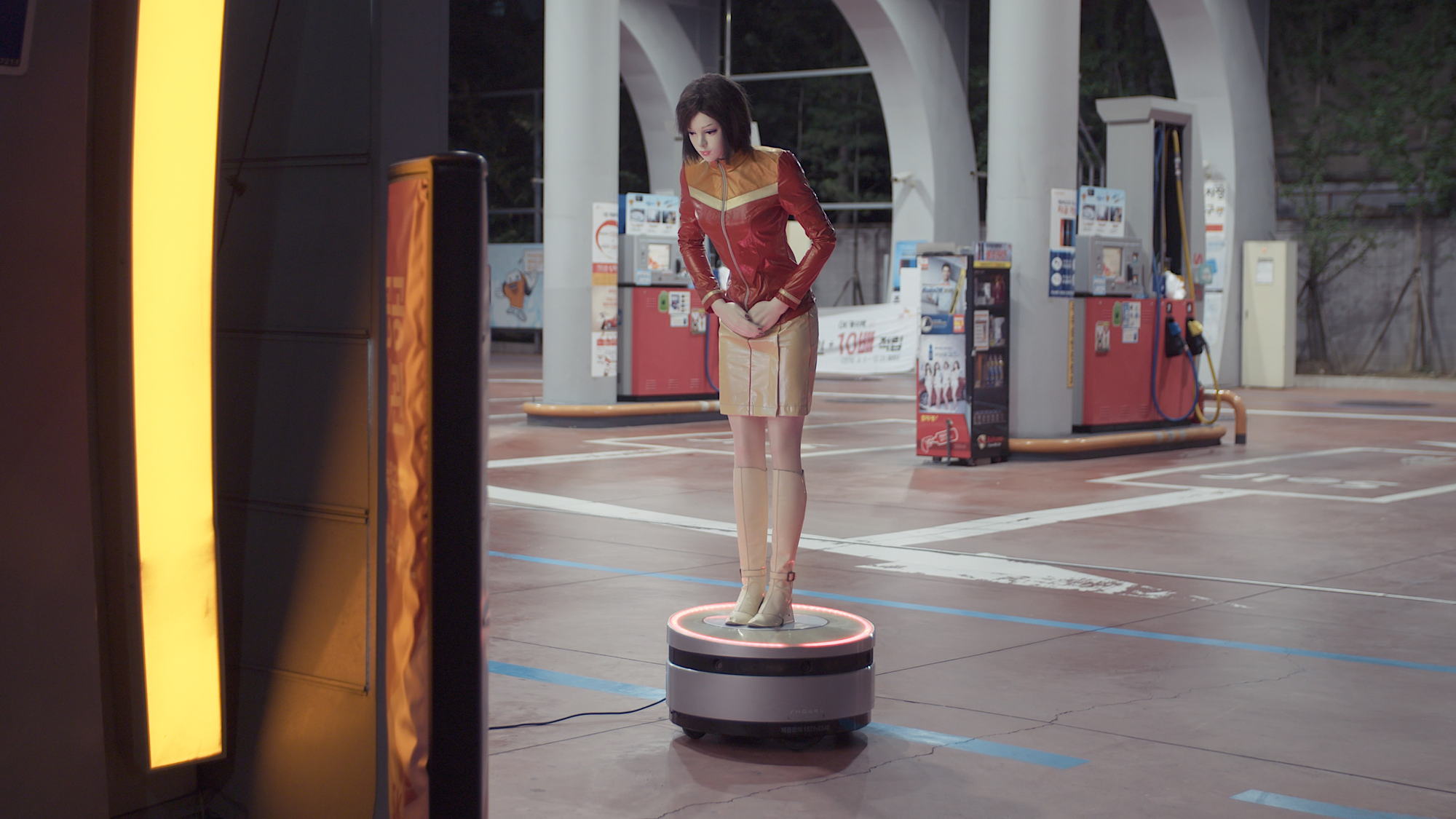
But if we dive into Korean service and acquisition culture, we are introduced to a range of things which could be linked to the mannequins. In Korea the customer is always king. Therefore the interaction between customer and salesperson is a lot more close and personal than anywhere experienced in the West. For someone not familiar with this culture it is sometimes a bit intimidating if the vendors are too much in one’s face. Let’s say in a shopping mall there is a lot of staff trying to serve, whereas in the West some of these jobs or positions don’t exist. What is probably the closest human working equivalent to a plastic mannequin in modern Korean acquisition culture, would be the staff who stand in front of shopping malls in order to bow, greet and guide incoming cars towards empty parking spaces. Since they are locked to one position and mainly work with their upper body, their movements come across as very robotic and through their portable speaker system they articulate the same message over and over again.
To find a link regarding the origins of the plastic mannequins in traditional Korea, the Kisaeng culture is something I see possible similarities in. Kisaengs were female artists supposed to entertain kings and people of higher status. Whereas they were mainly seen as entertainers engaging in fine arts, poetry and prose, they also were providing sexual services. Therefore their status was the lowest in society along with butchers and slaves. Nevertheless they were highly trained in their artistic skills and the government tried to ensure that they were educated properly. Kim Yung Chung the author of the book Women of Korea: A history of ancient times to 1945 explains that Kisaeng houses were mostly located close to the center of town around marketplace areas. I find it very interesting where she explains that these places were laid out to create a welcoming effect and that the area around the house would be landscaped with ornamental pools and plantings. According to what Kim writes in her analysis, I feel that in a way the plastic mannequins in Plastic Girls can be see as a modern interpretation of a traditional Korean Kisaeng.
The discomfort we feel viewing these sexualised mannequins is further exacerbated by their subservient interview responses. What made you adopt this naive, obedient position for them?
Scripting the interview was done in several phases. It took some time to get it right. Since the actual mannequins have a speaking function, which can be implemented into the speaker system in the base platform via SD card, I was exposed to a lot of their language while I was taking photographs for the preceding Plastic Welcomer photo series. Some of their statements were ridiculous and over the top and merely had a strong sexual connotation. All of the mannequins were programmed to convey a sexy, cute or innocent persona. When I started scripting Plastic Girls, I had the idea to express more of the mannequin’s feelings. In a way, I wanted to make them more human and cut out the programmed man-made speech. I felt that this approach would also work well in putting Plastic Girls more in tune with the prior films of the trilogy. Therefore the first script was very much about the mannequins discontent regarding their work and life.

With Udo Lee I not only had a talented composer on board, fortunately he was also very committed and therefore involved in the production from beginning to end. In a second step we narrowed down their character traits by sort of creating a more human profile, which then made it easier to revise the interview. After a couple of drafts went back and forth between Udo and me, the mannequins were overly affirmative of their weird ‘identity’, which resulted in a much more ambivalent angle on the subject.
Also the final translation into Korean was very important, since we wrote the interview in English to start with. In this final step Minority, the production company I collaborated with for this shoot, was very supportive. When I saw how they tweaked and pushed the text into the right direction, it clearly illustrated how deeply culture is ingrained into language itself. It also helped that some of the staff at Minority are fairly young and both male and female. Through their input the interview sounds more vital and less like it was written by a bunch of 40 year old men. In the end Minority also helped to implement the interview into the speaking software. In terms of the intonation and the rhythm of the spoken text, it was important where and how words or even syllables were stressed.
I want my films to fill some of the gaps in a marketing machine of stereotypes.
In the end, the interview approach for Plastic Girls felt right for the story. Rather than creating characters who became victims of a tragic situation, we were able to present our characters as products of a society in which gender related issues are not addressed sufficiently. This creates more room for thought and the visual ridiculousness is stretched further with a naive and obedient interview approach, which in a way disconnects us from the mannequins. Ironically the way the mannequins are represented in Plastic Girls, is very close to how they speak and how they are utilised by their store owners in public space. Ultimately this is what makes Plastic Girls a quite authentic documentary despite it’s abstractness.

Graphic designer Shin In-ah’s neon name titles are sublime. How did the two of you develop that neon reflexive style?
In-ah is a very talented designer and I consider myself as very fortunate to be able to work with her. Besides Plastic Girls I worked with her on a couple of projects (This Island is Ours, Journey To Ladakh, Last Letters) and In-ah has always very positively surprised me with what she came up with. Since she is super professional you can leave her with a lot of creative freedom and she will turn it into something beyond your expectations. For Plastic Girls, I provided the main framework, and In-ah developed the creative decisions and output by herself. She explains:
“I work in Eulji-ro area, where there are still many brothels disguised in karaoke. When I first saw Plastic Girls, it reminded me of those brothels and their way of using ‘cute’ stock images and neon signs. They are in many ways very similar – commonly found in everyday settings (streets, language), use of ‘cute’ or ‘unharmful’ image to disguise the fact that they are using women as sexual objects rather than as people. My role in this work is translating the film into typographic images and so the brothel signs that I see everyday were the perfect images that I could work with. Of course I didn’t directly ‘import’ the images I referenced, but rather exaggerated and wanted the images to appear super cute so when people encounter them for the first time, the meaning disguises itself, like the signs, like the language and like the Plastic Girls on the street.”

How do you feel your compositions, and their underlying narrative intentions, differ here from your earlier Plastic Welcomer stills project?
The Plastic Welcomer photo project was merely inspired by the quirkiness of those unique mannequins and how they have been integrated in public space. Since the medium of choice was still photography, ideally the overall context needed to be expressed as much as possible in a single shot. Therefore most shots are shot on a wide focal length from a distance trying to integrate as much context as possible within the shot. This is why most of these images not only focus on the mannequins, but also the space which surrounds them. I felt this was the best visual approach to illustrate the subject matter in a most comprehensible way.
In comparison to the Plastic Welcomer photo project Plastic Girls was actually given much more thought and depth. Of course film or video are quite different per se, since the former allows us to work with a much broader visual and narrative toolset. Nevertheless one can see not only in Plastic Girls, but also the other films of the trilogy, that this approach relates to a conceptual choice, which connects the three films despite it’s different subject matter.
Even though in Plastic Girls (like in the other 2 films) I visually broke the spacial context apart from the presentation of the characters, for the mise-en-scène of the film I wanted to create a strong visual relationship between the audience and the mannequins. The architectural compositions, which have been taken with the camera rigged on a gimbal stabilising device, are supposed to create a sense of the audience being walked through the spaces and their first hand experience is illustrated through the gaze of the camera. I wanted to create a very intimate feeling and include the audience in the film as much as possible rather then showing how the mannequins themselves engage within each specific space. The visual experience of these slow motion camera tracks has a very dreamlike and surreal texture, which almost alienates us from the spaces we see.


The compositions featuring the plastic mannequins themselves, are a generalised representation of the male gaze. With more narrow focal lengths the camera is very close on the objects. The controlled more or less fixed handheld style makes us stare at various (private) body parts of the mannequins. Whether we identify with the gaze or not, it makes us feel very uncomfortable staring at the plastic mannequins and that reflects the relationship between the objects and the passersby who encounter them every day on the streets. I felt that since the mannequins aren’t real humans, it allowed me to take this approach without being offensive. I want the audience to understand that Plastic Girls is not a stereotypical display of female body parts but that it illustrates how the male gaze is supposed to interact with those plastic mannequins in a public space simply for the sake of commerce.
You’re at great pains to make it clear that Plastic Girls isn’t an attack on Korean society, have you experienced any push back from South Korean nationals?
Ranging between documentary and fiction, Plastic Girls addresses gender issues through a unique document that illustrates one aspect of the sexualisation of public space here in South Korea. Differences in gender equality between South Korea and other places in the West are significant. Since I moved to Korea in late 2005, I have been confronted with those disparities in my day to day life. But as a foreigner, how do we and how should we address our concerns about something without it becoming direct criticism of Korea as a nation. Of course there will be people who disagree and feel attacked based on their national pride.
So far I have not heard any negative comments in this respect. That counts for the whole trilogy or most of my other films. I think the online and film festival platforms I show my films on, mainly cater to a self-reflective and open-minded community. This also could be the reason I don’t get so much push-back. The only time I received criticism was for my recent feature documentary This Island is Ours. The film is about activism related to an island conflict between Korea and Japan. In Korea the island is referred to as Dokdo. In Japan it is called Takeshima. My friend Alexander and I followed an activist on the Korean and Japanese side. Both of them have a very nationalist point of view and fight to claim the island as their national territory.
For Alexander and me it was really important to create a very neutral view on the conflict, by not judging whether the island is Korean or Japanese. For us the film had a more human angle and was not so much about the island itself. When we finished the film, the Japanese activist liked the film a lot, but the Korean activist (especially his wife) got really upset since the film was not making a clear statement that the island belongs to Korea. I think the Korean activist was portrayed as very nice and charming so that reaction really took us by surprise. In general though, Koreans seem to appreciate when viewing my work that they are introduced to a new or different perspective so I really appreciate to hear that.
The longer I lived away from home, the more I started to really understand that the way a society is structured, is deeply rooted within its culture and history. In a way this is obvious. But still, as an expat it is easy to drift away from the culture you once decided to live in after encountering elements of the host country’s way of life that you find disagreeable. This insight can stop one from bashing the culture and instead lead one to become more accepting of the way society shapes people’s lives. But then by the same token, what kind of criticism can you possibly engage yourself in if you live in a society which is so different from your own and possibly conflicts with your beliefs?
Plastic Girls is not a film that intends to be offensive towards South Korean society or make it look like gender inequality is an issue only with regard to this nation. Despite references to Korean society and culture, I want to make more of a general statement regarding gender inequality. The sexualization of public space, which is the focus of the film, I believe, illustrates a more global tendency, which in general should be of concern. By choosing plastic mannequins as the very peculiar main subjects of the film, I intend to make the audience feel uncomfortable, but also give them enough room to reflect on the sexualisation of public space on a conceptional level rather than specifically within the context of South Korean society.
It is my intention to create a certain awkwardness without being directly offensive towards anybody or by utilising national stereotypes. Even though this film is shot in Korea and references various distinct Korean public spaces, I really hope that this film speaks to an international audience and not only makes us look at gender misbalances in Korea, but allows us to reflect on how the culture produces a certain view of women in general and how we think about an on-going trend regarding a sexualisation of public space.
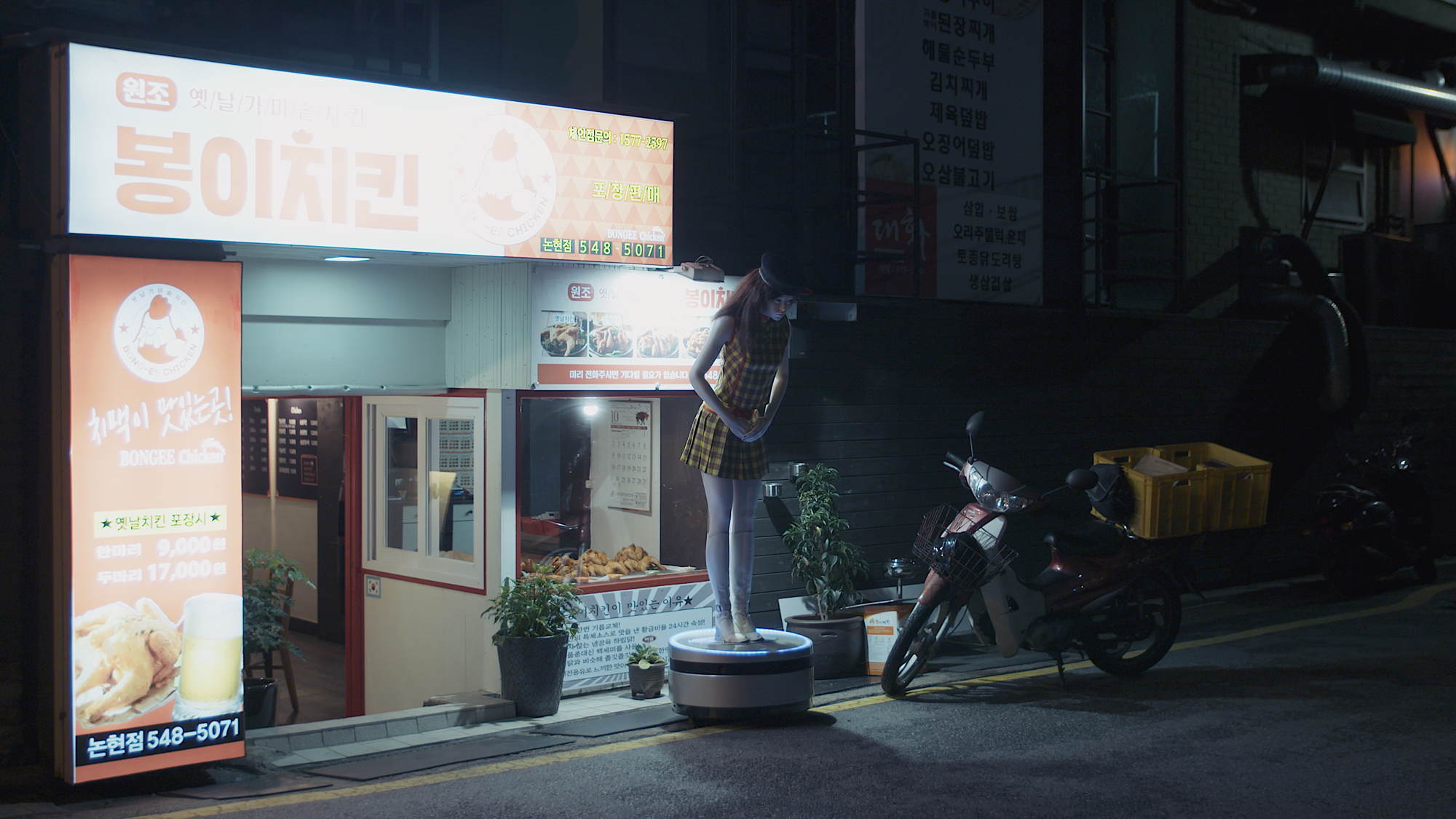
These mannequins are a phenomena which is dying out – do you feel this is a sign of a maturing society or is the reason more commercially driven?
All I can do is answer with an assumption. The twelve years I have lived in Korea, this country has gone through some tremendous change. One could argue whether the changes are for good or bad, but the speed of change in every aspect of life here in Korea is really unparalleled. Some people in the West might disagree with some Korean values which they think are too conservative and rigid. But if you only look at the aspect of change in Korea, I feel it outplays the mindsets of most Western nations, which are very much characterised by stagnancy with little room for change. So based on that, the dying out phenomena of the plastic mannequins could definitely relate to a maturing Korean society. This definitely makes sense.
But then I think we can also not eliminate the fact that marketing methods and principles are constantly in a process of change. Marketing methods only work for a period of time and with the ongoing digitalisation these terms get shorter and shorter. Corporations are advertising their services to constantly stay fresh in order to succeed. Within the city of Seoul I see the phenomena of conventional billboard advertising dying out. Most of these billboards stay empty, left with a phone number to call printed on a large white screen, they are obviously remedies of a past before the internet and social media platforms managed to take over the world of advertising. So where does that leave the plastic mannequins?
Not only are the mannequins expensive, but they are also only original for a short amount of time. Businesses here in Korea often go bankrupt within a couple of months. There is such a quick rotation of businesses within each neighborhood. So how would it be possible that the mannequins outlive the store they have been working for. There was a gap of almost two years between the Plastic Welcomer photo series and Plastic Girls. When we went back to the locations I once took the photographs, more than 2/3 of the businesses were not operating any more. When we contacted the company which made these dolls, surprisingly they had also gone out of business. This leaves me thinking that I should consider a film about the mannequins once they are jobless. Are they dumped on landfills, do collectors keep them at home or are they buried in mannequin graveyards … Plastic Girls 2.0!
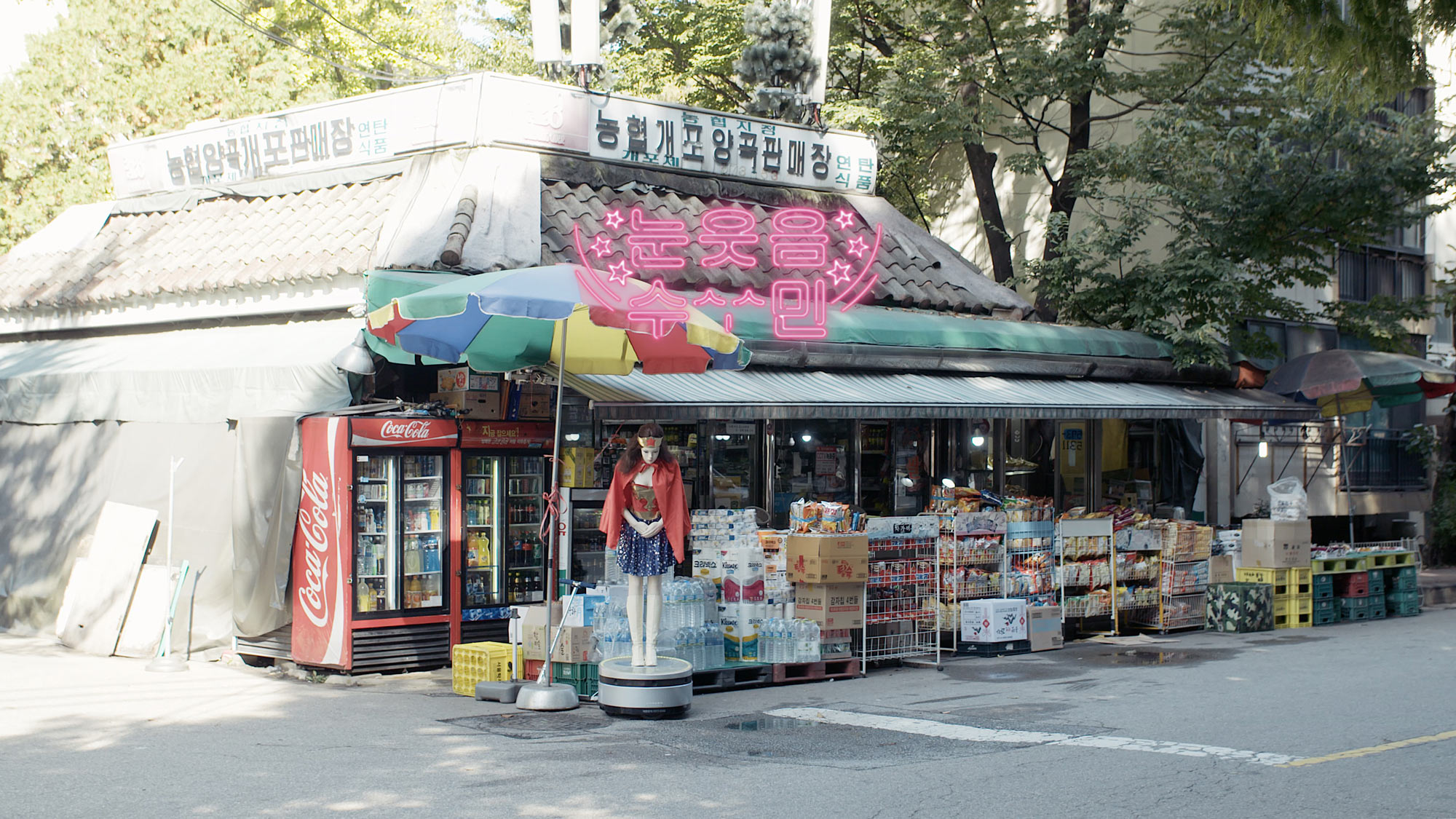
With the Korean related trilogy now complete, how has it altered your understanding of and relationship to your adopted home of the past 12 years? What would you like non-Korea residents to take away from the films?
Each film of the trilogy talks about very different topics, but what ties the three films together is each of its focus on space. In Bikini Words we see work spaces from the factory period of Korea’s 70s and 80s, Last Letters shows a very intimate picture of private spaces related to the victims of the Sewol ferry accident and Plastic Girls is an illustration of a sexualization of public space. So in each film space has a different purpose and the characters of each film interact with space in a very different way. For the factory workers in Bikini Words the spaces they used to work in are now merely a testament of time, whereas the spaces in Last Letters have a strong notion of memory, however space in Plastic Girls is a tool to illustrate gender inequality. Therefore time, memory and inequality is how I would like to summarise these 3 films.
In my films I mainly identify with the underdog rather than the person who is always in the spotlight.
During the years I have lived in Korea I have mainly addressed issues related to space within my work. Some earlier projects talk about spaces of disappearance, others look at how urban and rural space are intertwined. Whereas some of my older projects were mainly inspired by raw concepts of urban development, each film within the trilogy was rather inspired by an event or a situation with a strong human focus, which made me take a more narrative rather than a strictly conceptual space related approach. Therefore this trilogy has altered my understanding mainly from a human perspective.
To be honest, I did not know much about the Korean factory period from the 1970s and 80s before making Bikini Words. Before Last Letters, my view on the Sewol ferry accident was not very profound and disconnected from the sad day to day reality of the families, which the film only catches a glimpse of. And last, the plastic mannequins first caught my eye just as a quirky unique phenomena for the Plastic Welcomer photo series, before Plastic Girls gave it more depth and showed how the mannequins sexualise the space around them and make gender inequality an evident problem.
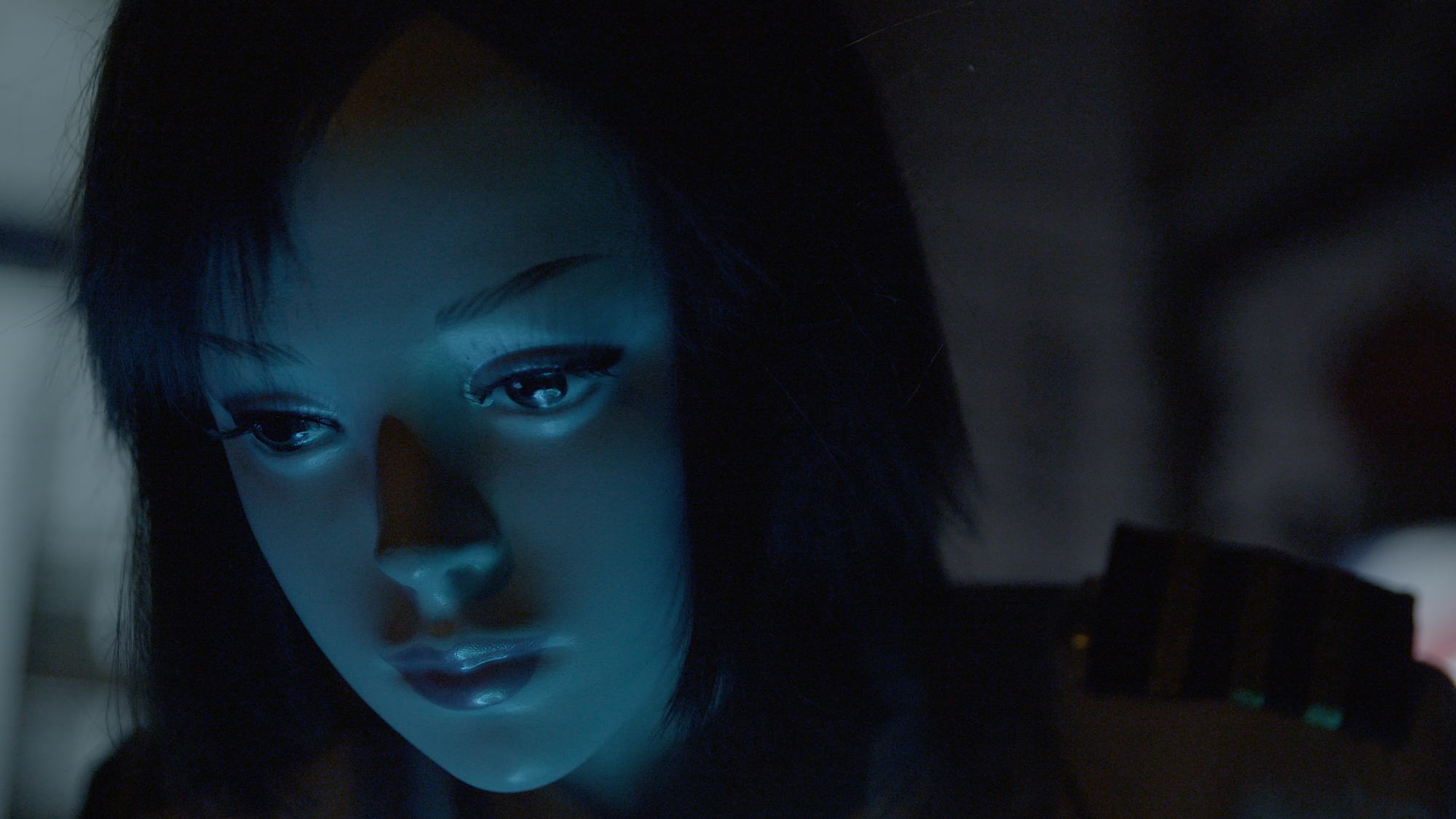
Even after living here for 12 years, Korea in many ways is still very complex and inscrutable to me. As an expat it sometimes sets you into this hybrid world, where not only you feel more and more out of touch with your own culture, but also find it difficult to fully make sense of your adopted home. This is where it helps me to work as a filmmaker. Engaging in different facets of culture as a (visual) storyteller helps to bridge an adopted home to something you simply consider home.
Since the 1990s Korea has gained more and more hype overseas with the Korean Wave. Especially in South, East and Southeast Asia, Korean pop music and Korean dramas have become highly popular. In my films I mainly identify with the underdog rather than the person who is always in the spotlight. Rather than portraying Korea as a dynamic, modern but also traditional heaven in Asia, I want my films to fill some of the gaps in a marketing machine of stereotypes. Hopefully Korean and non-Korean residents find some value in my stories. Even though my films might lack the glamour, hopefully they map Korea as a more accurate and realistic place beyond the shiny facades of contemporary Korean pop culture.


